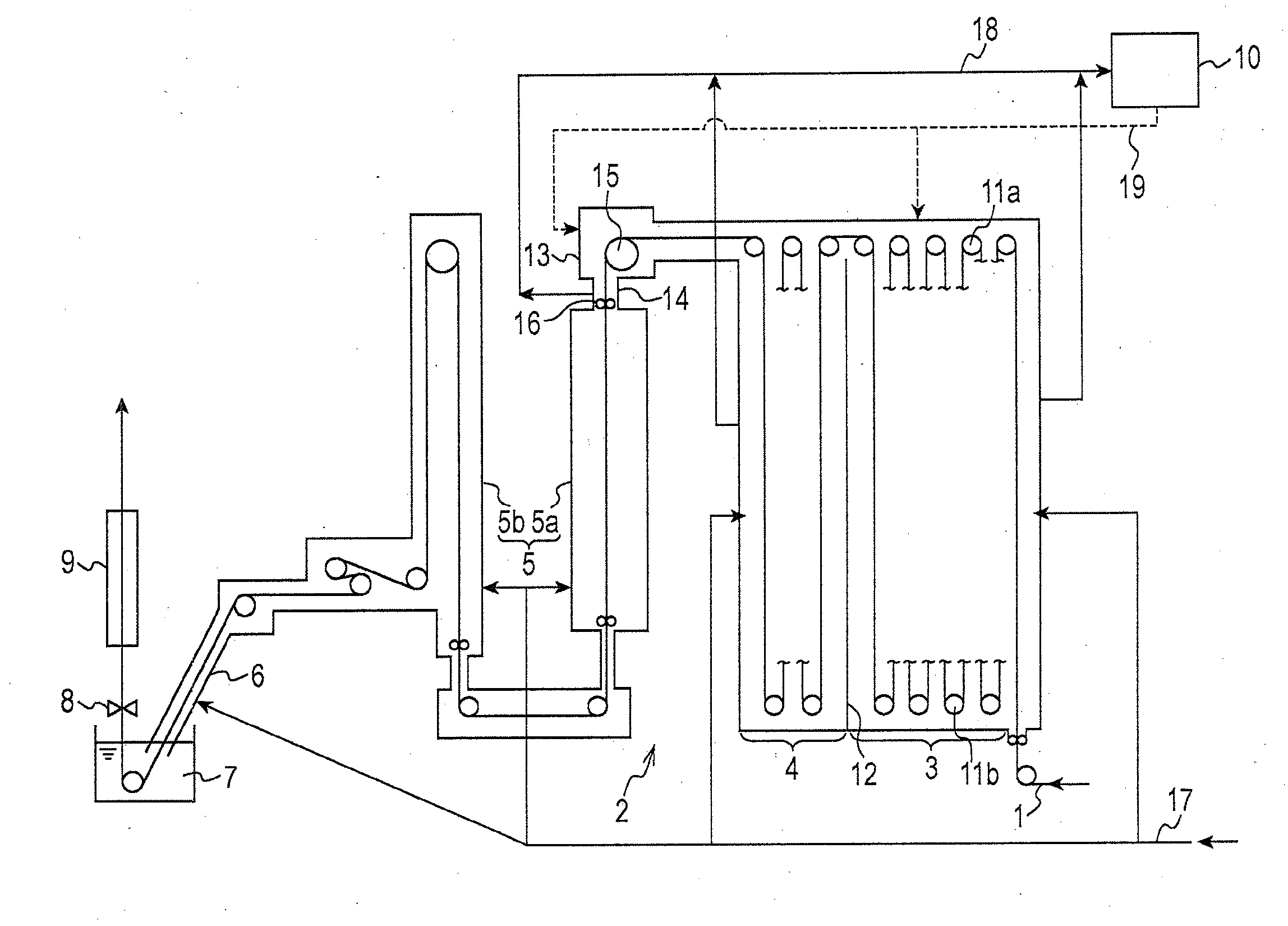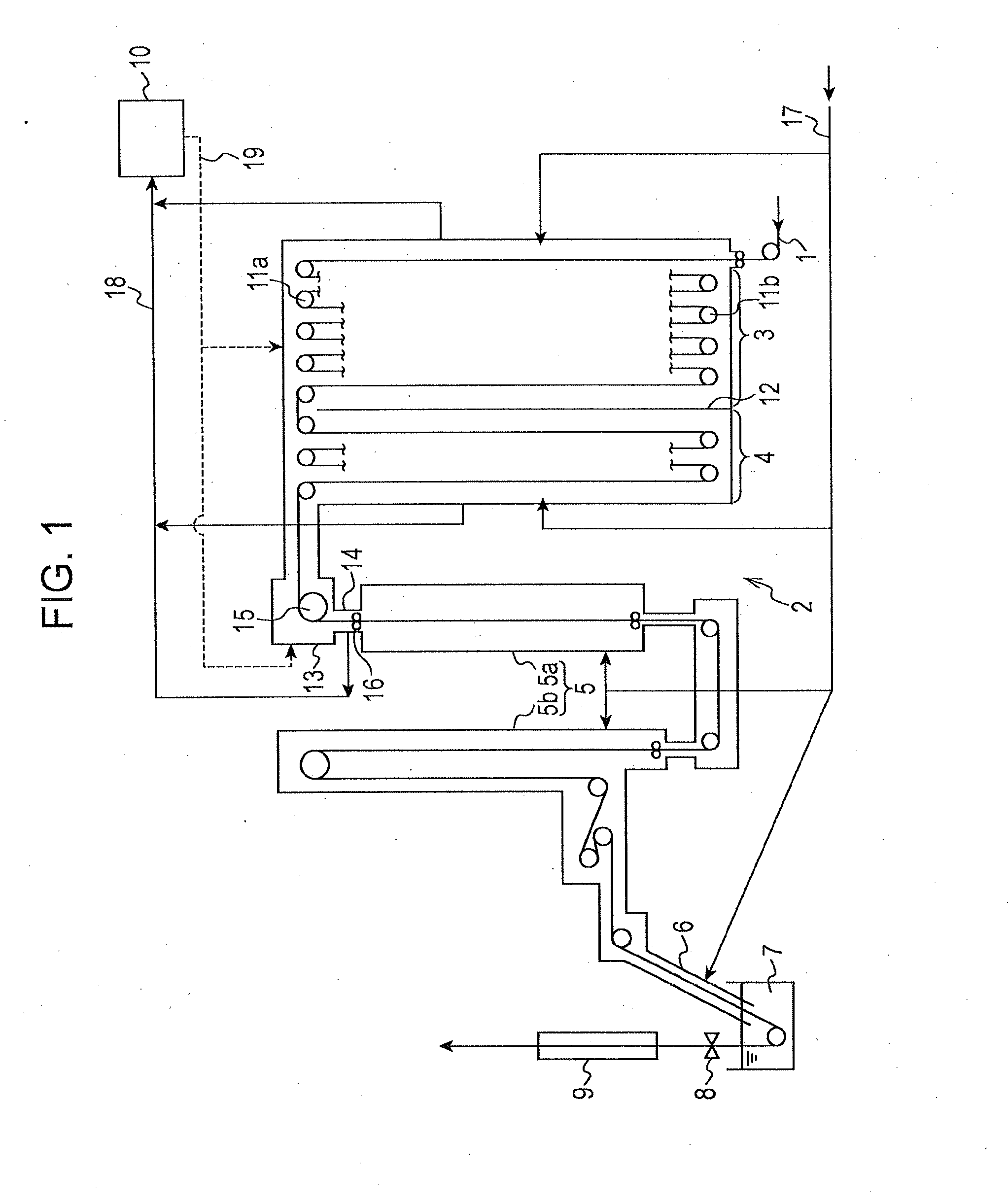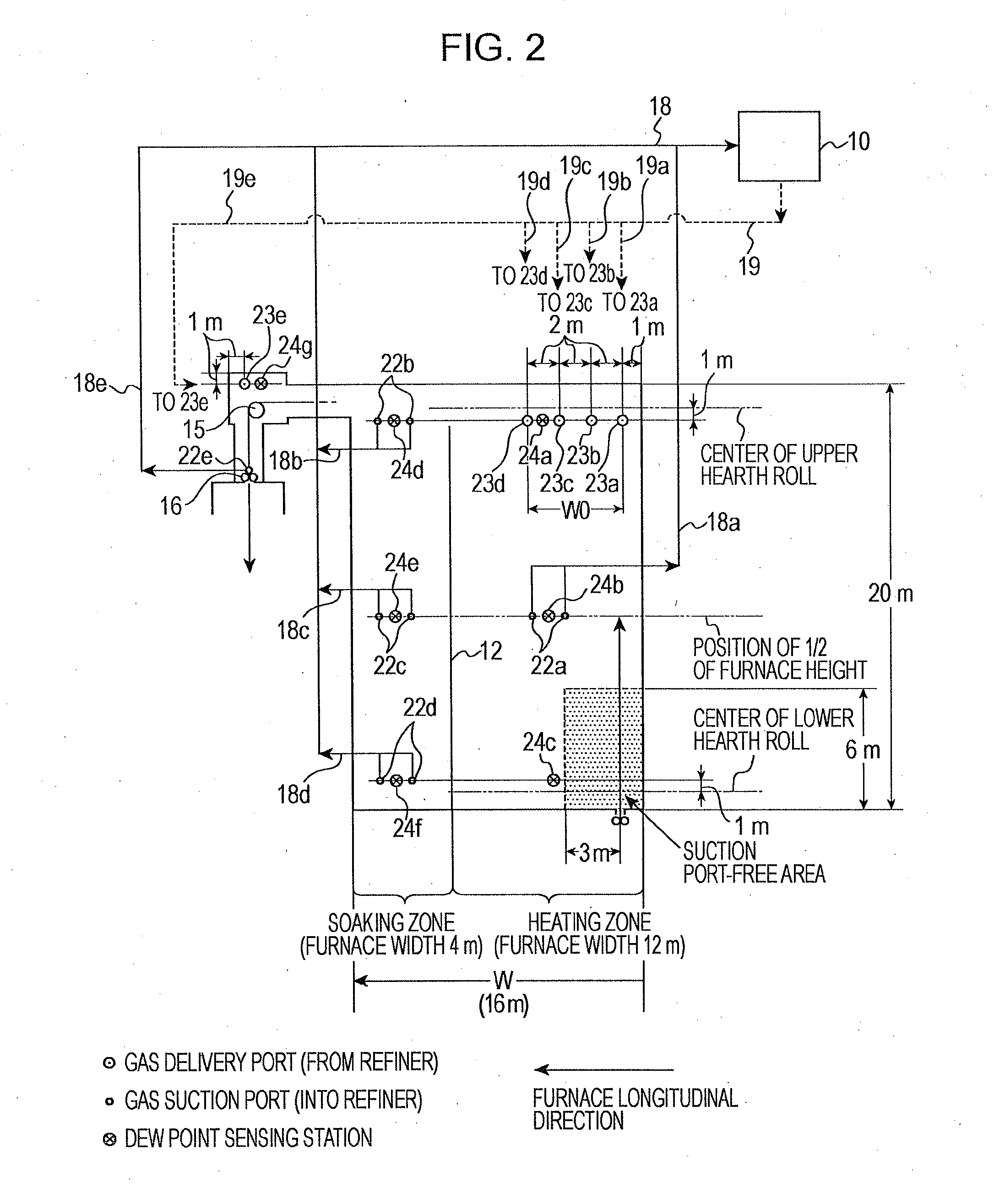Continuous annealing furnace for steel strip, continuous annealing method, continuous galvanizing apparatus and method for manufacturing galvanized steel strip (as amended)
a technology of continuous annealing furnace and steel strip, which is applied in the direction of furnaces, heat treatment equipment, charge manipulation, etc., can solve the problems of reducing productivity, surface appearance defects or defects in chemical conversion treatment such as phosphate treatment, and preventing productivity from being lowered. , the effect of reducing the moisture concentration
- Summary
- Abstract
- Description
- Claims
- Application Information
AI Technical Summary
Benefits of technology
Problems solved by technology
Method used
Image
Examples
example 1
[0085]Using an ART type (all radiant type) CGL (having an annealing furnace length (total pass length of a steel strip in the annealing furnace) of 400 m and a furnace height of a heating zone and a soaking zone of 20 m) illustrated in FIG. 1, dew point determining test was performed. The furnace width (W) of the heating zone was 12 m and the furnace width of the soaking zone was 4 m, which resulted in the total furnace width of the heating zone and the soaking zone being 16 m.
[0086]Atmospheric gas feeding positions from the outside of the furnace were, in the soaking zone, located at positions 1 m and 10 m higher than the hearth on the driving side with 3 positions in a line in the longitudinal direction being located on each height, that is, 6 positions in total, and, in the heating zone, located at positions 1 m and 10 m higher than the hearth on the driving side with 8 positions in a line in the longitudinal direction being located on each height, that is, 16 positions in total....
example 2
[0102]Using the ART type (all radiant type) CGL illustrated in FIG. 1 which was used in EXAMPLE 1, the decreasing trend of the dew point was investigated.
[0103]The conditions of the conventional method (in which a refiner was not used) were as follows. That is, the atmospheric gas which was fed into the furnace consisted of H2: 8 vol % and the balance being N2 and inevitable impurities (having a dew point of −60° C.), the amount of gas fed to the cooling zone and the downstream part thereof: 300 Nm3 / hr, the amount of gas fed to the soaking zone: 100 Nm3 / hr, and the amount of gas fed to the heating zone: 450 Nm3 / hr. In addition, using a steel strip having a thickness of 0.8 to 1.2 mm and a width of 950 to 1000 mm (containing the same alloying elements as given in Table 1), an annealing temperature was 800° C., and a steel strip traveling speed was 100 to 120 mpm.
[0104]The conditions of the method according to the present invention were the same as described above, and, further, using...
PUM
| Property | Measurement | Unit |
|---|---|---|
| Length | aaaaa | aaaaa |
| Length | aaaaa | aaaaa |
| Width | aaaaa | aaaaa |
Abstract
Description
Claims
Application Information
 Login to View More
Login to View More - R&D
- Intellectual Property
- Life Sciences
- Materials
- Tech Scout
- Unparalleled Data Quality
- Higher Quality Content
- 60% Fewer Hallucinations
Browse by: Latest US Patents, China's latest patents, Technical Efficacy Thesaurus, Application Domain, Technology Topic, Popular Technical Reports.
© 2025 PatSnap. All rights reserved.Legal|Privacy policy|Modern Slavery Act Transparency Statement|Sitemap|About US| Contact US: help@patsnap.com



